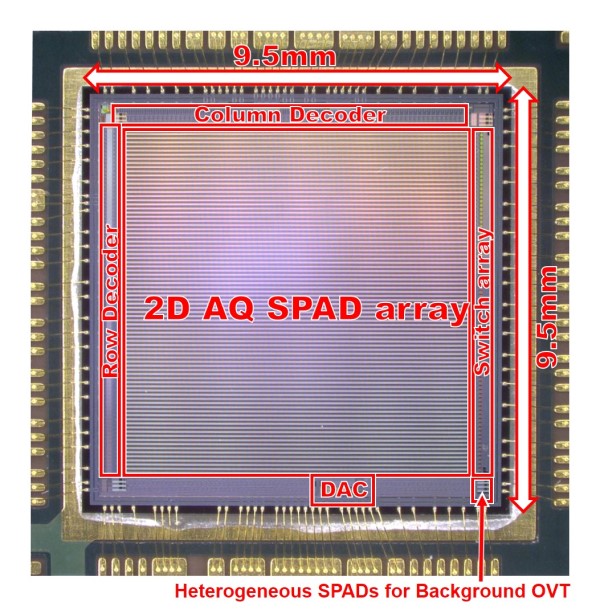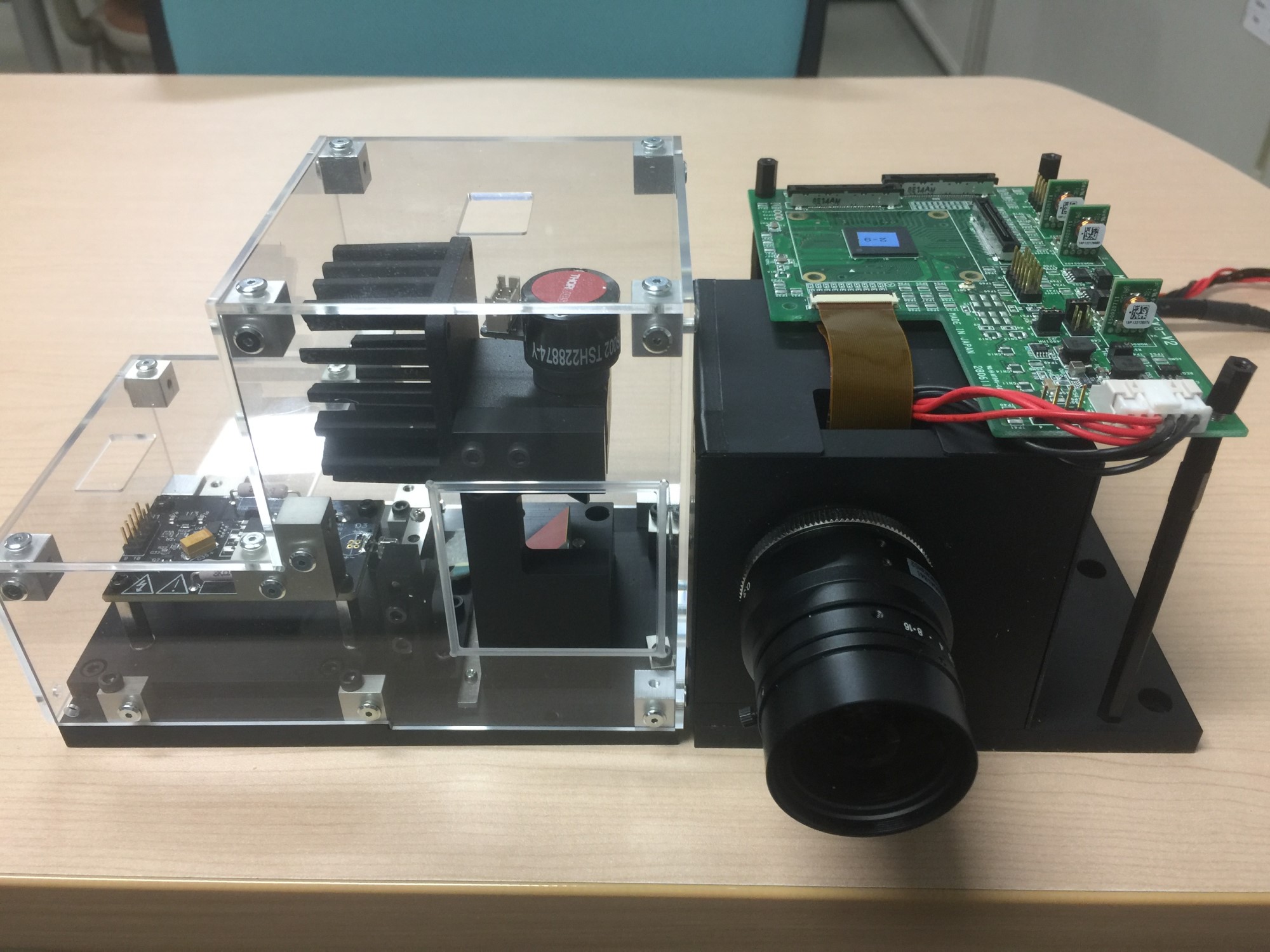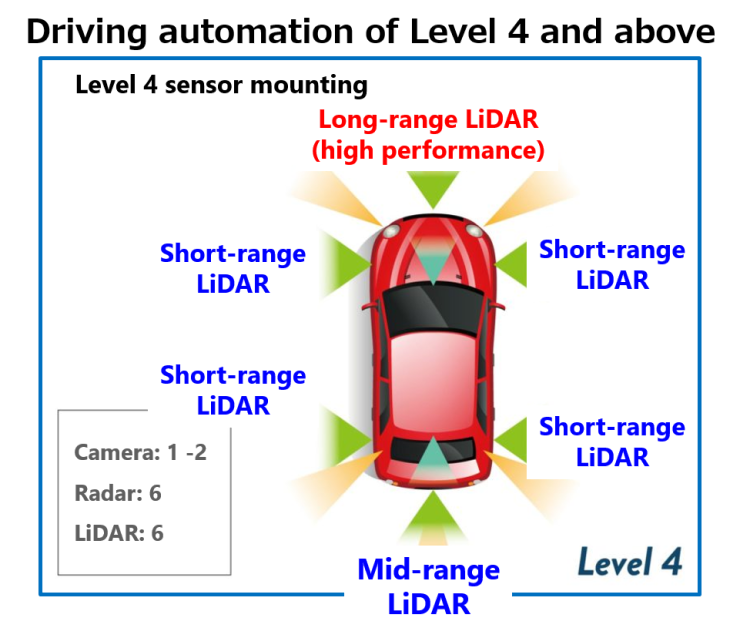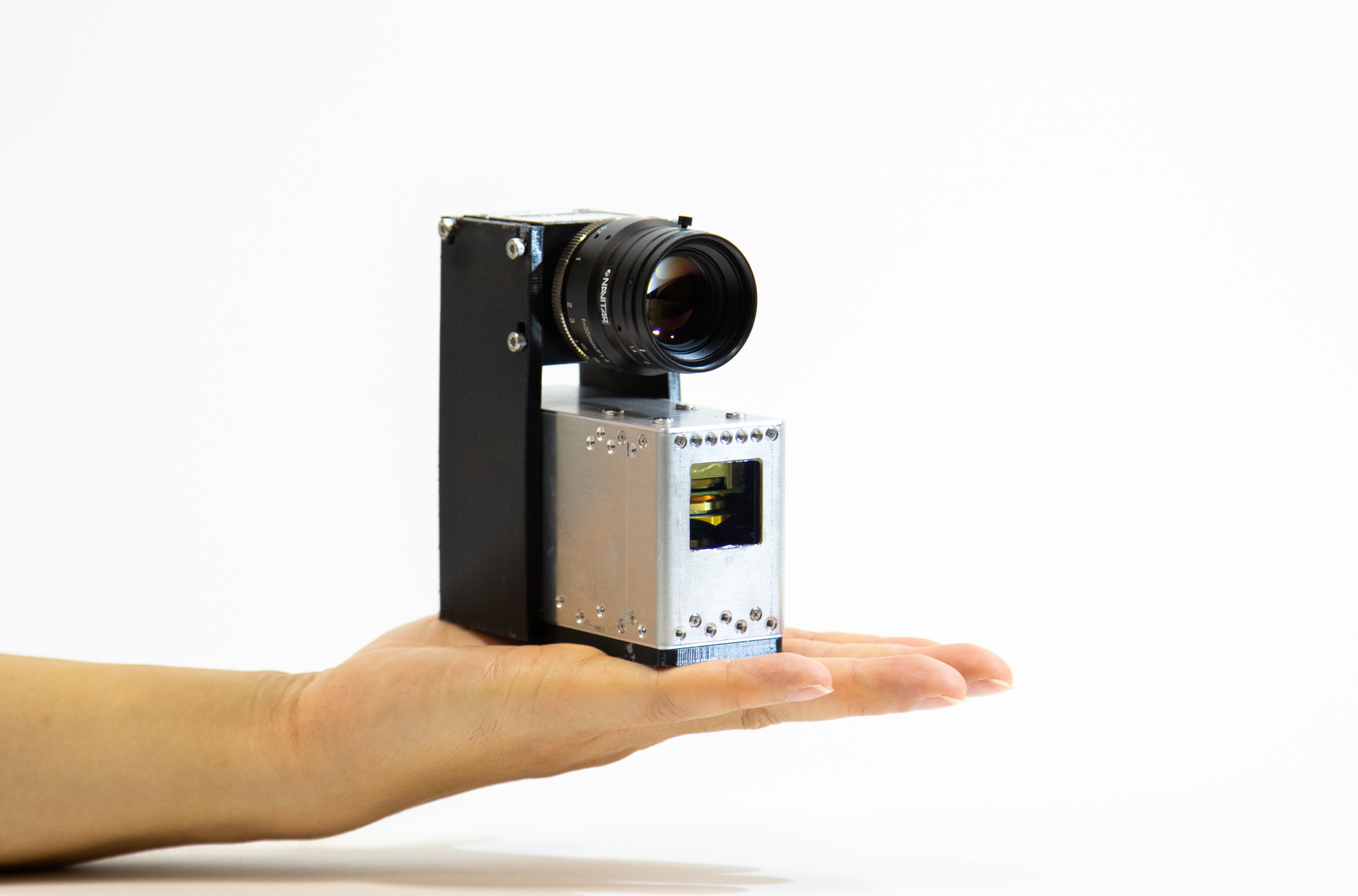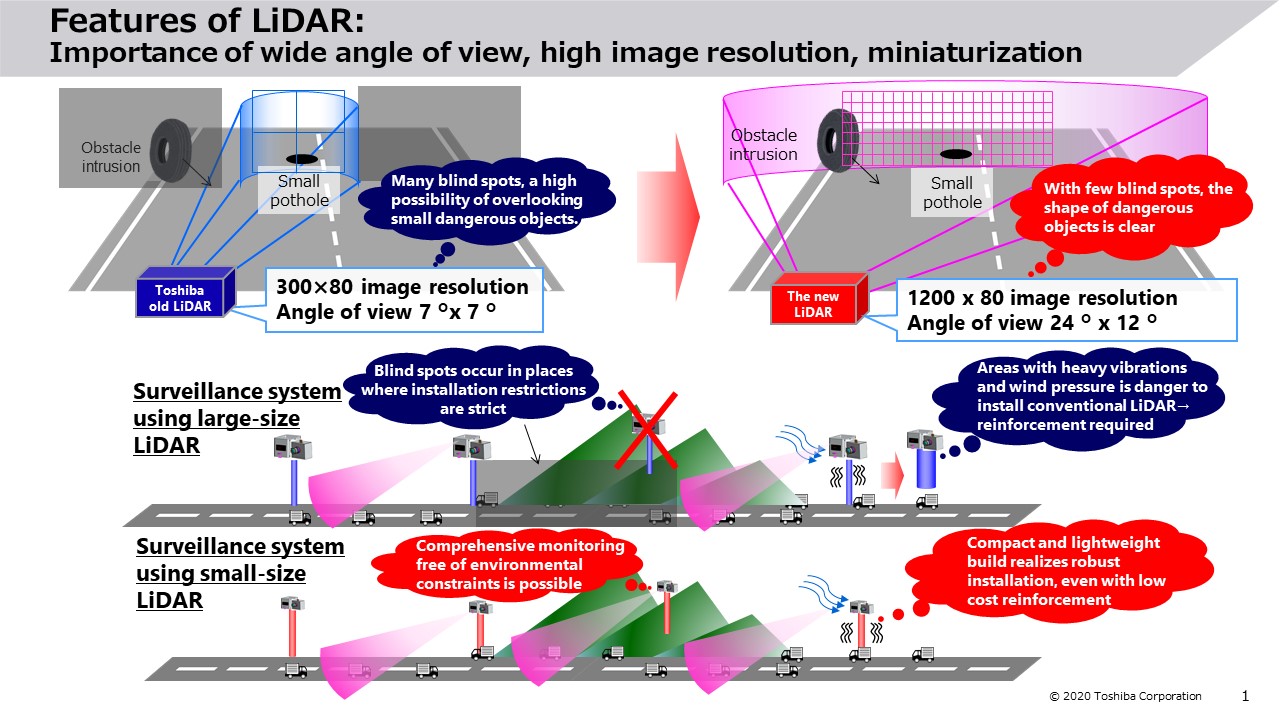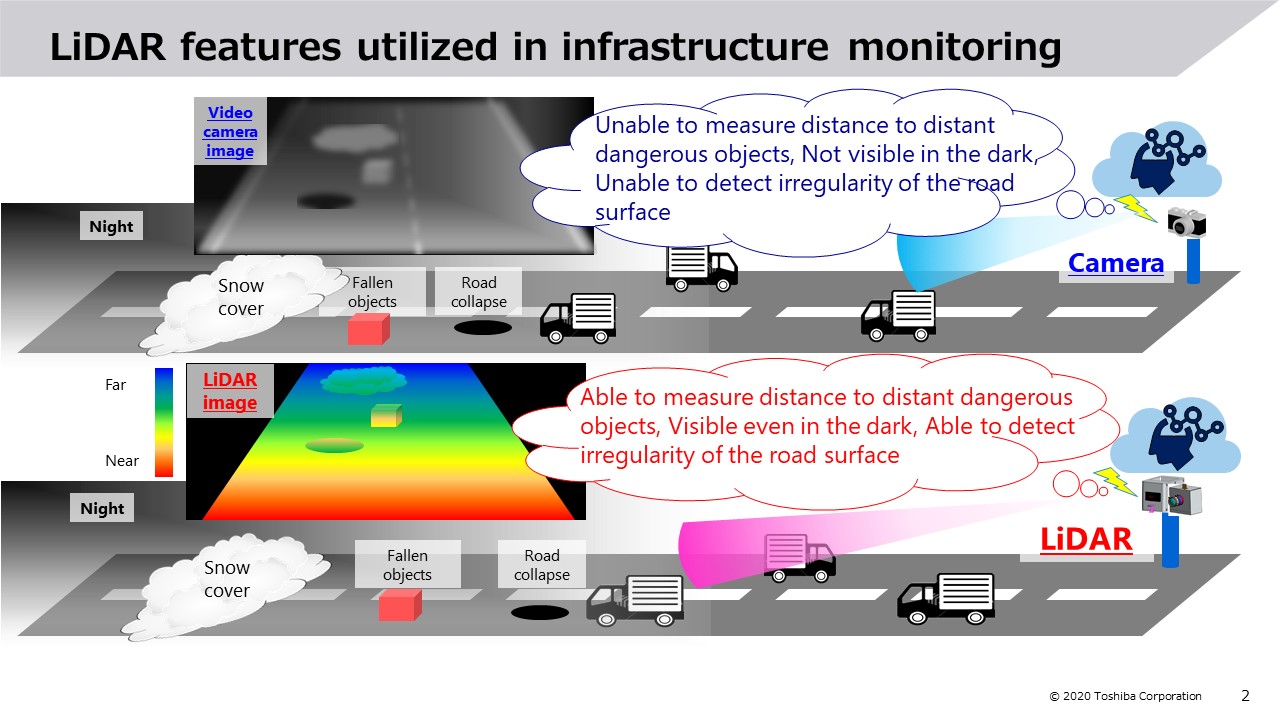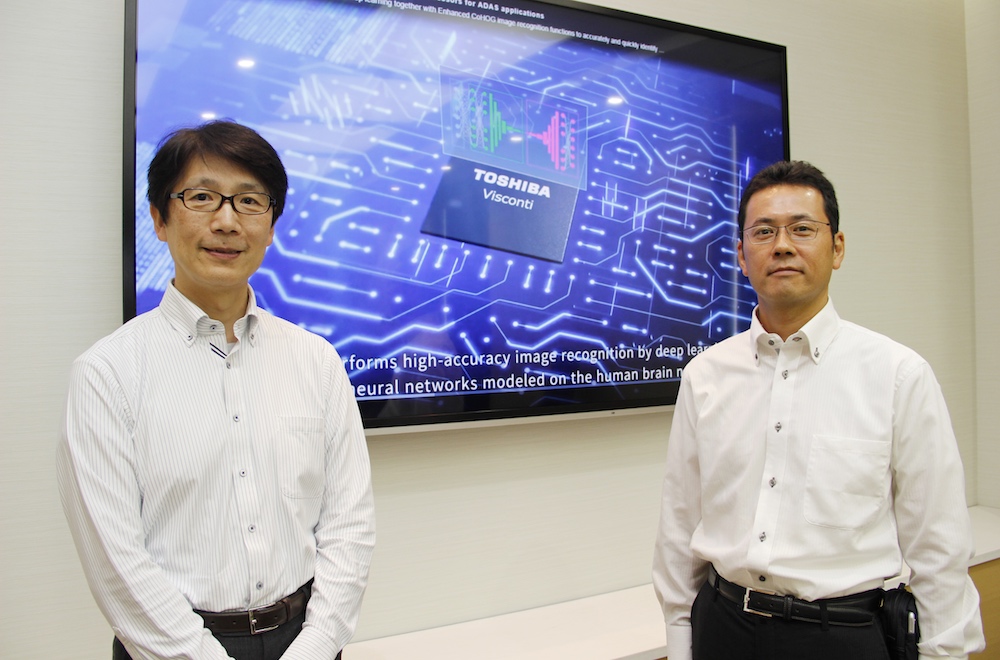Taking on the world’s smallest LiDAR, Part 2 –Constant, reliable infrastructure monitoring
2022/03/09 Toshiba Clip Team
- Capabilities that realized the world's only palm-sized high-resolution LiDAR
- World #1 communicative engineers realize World #1 technology in just 1 year!
- Not just for autonomous driving—a role to play in infrastructure monitoring
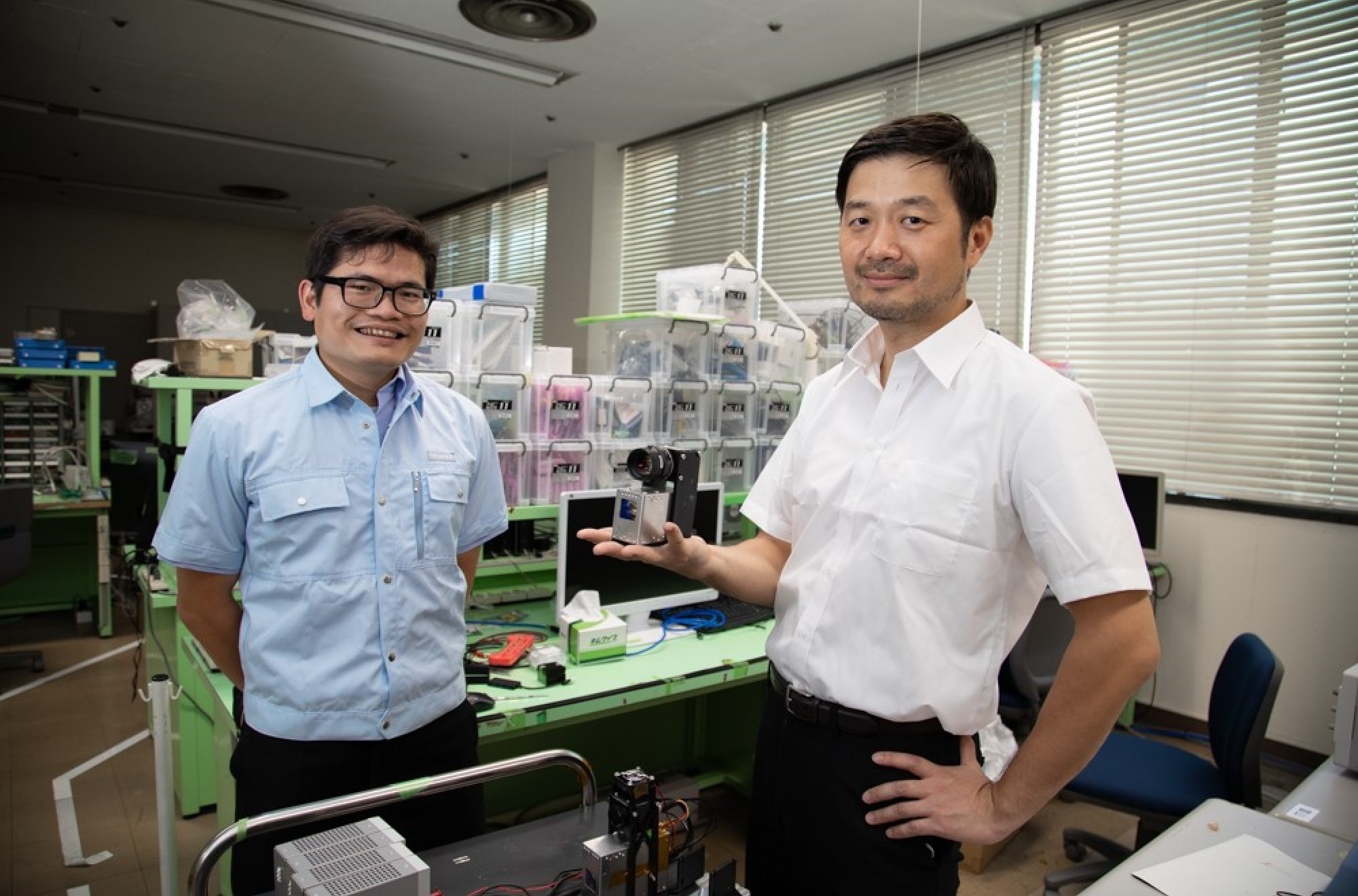
Solid-state LiDAR is an essential component for realizing high driving automation (autonomous vehicles). It replaces mechanical parts and uses semiconductor components for light control, the key for scanning environment, measuring distances and mapping objects in real time. In the first part, we explained LiDAR’s mechanisms, and how technologies only Toshiba could realize will lead to LiDAR miniaturization and price reductions.
Solid-state LiDAR systems can be made smaller and cheaper—this results in low-image resolution for long-distance detection. Toshiba used proprietary technologies to overcome these drawbacks. The adoption of a non-coaxial LiDAR, suitable for a solid-state solution, and development of new technology for an innovative light receiving silicon photo multiplier (SiPM), achieved high-resolution detection over extended distances. Leads to light-receiving LiDAR technology LiDAR that will contribute to realizing driving automation of Level 4 and above—.
This technology was brought to fruition in a solid-state LiDAR that was not only the world’s smallest, but also achieved the highest image quality and longest range, a full 200 meters. In Part 2, we talked to Akihide Sai, leader of the development team at the Research & Development Center’s IoT Edge Laboratory, about the technology, and what can be expected from high-performance solid-state LiDAR.
Akihide Sai, Senior Research Scientist,
IoT Edge Laboratory, Information and Communications Platform Laboratories,
Corporate Research & Development Center, Toshiba Corporation
Realizing the world’s smallest size and high image resolution with hybrid SiPM
In July 2020, Toshiba announced development of light receiving technology for LiDAR that would help to realize Level 4 driving automation; a solid-state solution characterized by size and cost reductions, and a range of 200m, comparable to the performance of current mechanical LiDAR. Just one year later, in June 2021, Toshiba revealed that it had successfully tested a solid-state LiDAR based on enhancements to the technology, and that achieved the world’s smallest size, highest image quality, and the same long range.
Impressive as this development pace was, Sai does not seem surprised by his team’s achievement. “Actually, even in 2020, I was sure we would be able to move toward smaller size and higher resolution.” The source of this confidence was SiPM hybridization.
An SiPM is an assembly of ultrasensitive light receiving cells, able to detect even faint reflected light signals from a laser, along with multiple transistor circuits that control operation. The technology announced in 2020 achieved its reduced size and improved resolution by using transistors that restart unresponsive light receiving cells.
Sai offers to explain it all in more detail. “First, we need to look at the 2020 technology. In a standard SiPM, a cell triggered by light becomes saturated and unresponsive for a time. To counter this, and not miss light signals, an SiPM needs a large array of light receiving cells, but that takes up a large area, and it’s difficult to implement. However, installing transistors to restart triggered cells reduces their unresponsive time and advances miniaturization.”
The 2D SiPM array chip developed by Toshiba that contributed to LiDAR miniaturization
This is as far as we got in Part 1. To move ahead, we asked Sai what difficulties had to be overcome to realize the world’s smallest LiDAR.
“The July 2020 announcement introduced the use of transistors to restart cells,” Sai says. “The goals of the next round of development were further miniaturization and higher resolution.
“To improve SiPM sensitivity, light sensitive cells must be supplied with high voltage, by using high withstand voltage transistor. In 2020, we used medium withstand voltage transistors, but this time, we use both high and low withstand voltage, in other words, hybrid-transistors.
The prototype LiDAR announced in July 2020
“The high withstand voltage transistors improved the performance of the light receptor cells, while the low withstand voltage transistors were used to restart saturated cells; a low voltage was enough for that.”
There was also another very effective design improvement, as Sai explains. “We developed a new insulating trench that we sandwiched between the transistor and the light receiving cell. This eliminated the need for the wide buffer layer that had previously protected the transistor, so we won further miniaturization.”
Higher levels of autonomous driving will require more LiDAR. Level 4 needs six LiDAR, so they need to be small, and deliver high image resolution and a low price.
The high voltage of high withstand transistors increases SiPM sensitivity to a point where even faint light sources can be clearly received, extending the effective range and bringing closer a solid-state LiDAR offering long distance measurement and high image resolution. However, the transistors also increase size. Sai’s team countered this by not using high withstand voltage throughout but only to enhance cell performance, with low withstand voltage transistors in other parts. Not only did this “Hybrid SiPM” improve performance, it was also smaller.
“Using this hybrid SiPM has won significant performance improvements for our LiDAR,” Sai reports. “Compared to the year-earlier prototype the size has been reduced to a 1/4, the resolution has been quadrupled to 1200 x 80 pixels, and the angle of view has increased from 7 ° x 7 ° to 24 ° x 12 °.
“On top of this, we also applied Toshiba’s own device temperature correction technology, which helps to maintain high-level performance even in environments where there are strong vibrations, strong wind, large temperature changes and the like.”
The secret to achieving palm-sized LiDAR in just one year was open communication between engineers.
Sai is quick to describe this advance as being “like Columbus’ egg,” in that there were no new technological discoveries or inventions. He says with pride that, “The important thing is that we upgraded the technology announced last year to a level of completion where it could be used by customers in the field in just one year”. LiDAR technology is constantly advancing, and Sai and his team made a point of promoting development as quickly as possible.
The solid state LiDAR announced in June 2021. Palm sized, it’s the world’s smallest.
Two reasons explain why the team was able to achieve this fast pace of development. One was to aim for a mechanism that was as simple as possible. “I work to the theory that simple technology is sound,” says Sai. “Even when you are patenting a technology, the simpler it is, the wider the range in which you can exercise your rights.” In addition, the simple structure and mechanism helped to realize fast prototyping.
However, even with a simple technology, it would have been difficult to announce the LiDAR after a period as short as a year without the second reason: the relationship of trust with business divisions and factories. As the name indicates, the R&D Center, where Sai’s team works, is responsible for researching basic technologies for use in business. But if the business divisions do not cooperate and make prototypes in their factories, those technologies do not take shape.
Sai fully understands this. “Business divisions and factories are busy with their own daily work, and they make our prototypes in addition to their normal workloads. Of course, I paid all due respect to that. But I was also very careful to explain the technology, and what kind of social issues could be solved by commercializing it. And above all else, I made a really strongly determined request to them to get it done in a year.
“To be honest, nobody in Toshiba would deny that our speed of execution is inferior to that of startups “, Sai says frankly. However, his own project and its rapid progress can be seen as symbolic of how things are changing. This is underpinned by Toshiba’s corporate culture, cultivated throughout its manufacturing history, of really pushing ahead with a project once the commitment is made.
“I think communication between engineers in Toshiba is world class. If you are serious about something, you will find various departments ready to step up and cooperate. This is not a company that picks young shoots. We warmly nurture them until they grow strong.
“By taking advantage of this corporate culture, and if we can promote rational project management, we can put unexpected initiatives out into the world. It’s with that expectation that I continue my research at Toshiba.”
The announcement of Toshiba’s world-beating solid-state LiDAR is just that kind of initiative, and may well lead to businesses that generate new value.
Toshiba’s LiDAR contributes to improved responses to natural disasters, more efficient logistics, and highly accurate infrastructure monitoring.
LiDAR is, of course, closely associated with vehicle automation, a fast growing market expected to reach 42 million units a year by 2030. But while Toshiba sees that as one use for its high-performance solid-state LiDAR, it is not the only one. High-precision infrastructure monitoring was always a target.
Toshiba has a unique device temperature-correction technology, and integrated into the LiDAR it ensures high performance, even in environments subject to severe vibration, heavy winds and extreme temperature changes. This allows open-air installation to constantly monitor infrastructure and quickly detect dangers from threats such as slope collapses and landslides onto roads during torrential rains, gusting winds bringing down large objects and structures, heavy snowfall, and more.
Comparison of large- and small-sized LiDAR in an infrastructure monitoring system
“We were always aware of impacts from social issues unfolding in the background,” says Sai. “Things like extreme weather, and then the pandemic. Domestic cargo transport volumes decreased 7.2% in 2020, due to lack of essential workers, like truck drivers. In addition, we saw a lot of extreme weather, including heavy snowfall trapping vehicles on roads, and heavy rains that collapsed roads and caused landslides. The multiplier effect of these events made the situations even worse.
“As solutions, automating transportation, such as driverless trucks, will bring labor-saving and efficiency improvement that can counter the damage and lack of essential workers from the impact of Coronavirus, and in cases of extreme weather events details of obstacles along routes can be shared in real time.”
The first thing to consider is installation alongside roads and railway tracks. Doing that with high-priced mechanical LiDAR would require a huge budget, but solid-state LiDAR will keep costs down.
In addition to cost considerations, a mechanical LiDAR has a large housing, which limits installation locations, and this large size makes it much less resilient to strong wind and vibration. There are few restrictions on where small solid-state LiDARs can be installed, and their few mechanical parts is another advantage that minimizes faults and the need for maintenance.
Sai mentions other pluses. “Some people say why not use cameras, but they have the disadvantages of not being able to detect dangerous objects or uneven road surface from far distance or in night, and they don’t always pick out things in the dark. Our high-performance solid-state LiDAR can pick out irregularities as far as 200m away. And, of course, it sees target objects accurately, even in the dark”.
The functional differences between cameras and LiDAR when applied to infrastructure monitoring
Specific performance details are impressive. Solid-state LiDAR can pick out a 20cm deep and 30cm wide pothole from 40m, or a dangerous object 30cm high and 30cm wide from 80m. “With LiDAR’s improved sensing capability, we can be aware of the dangers on the road in advance, automated driving should become even safer,” says Mr. Sai.
In the future, we can hope to see LiDAR supporting safer and more advanced automated driving not only through use in vehicles but in transportation infrastructure too.
Deployment as infrastructure monitoring LiDAR by around 2024
While working toward the spec targets of the prototype, Sai and his team also had other targets in sight. First of these was achieving practical use at the testing stage. Beyond that, commercializing a practical product in two years’ time. As he explains, that required another part, the MEMS mirror. “It’s an essential component that swings the laser irradiated from the source from left to right to scan target objects. Only with the MEMS mirror was it possible to complete a more compact and flawless solid-state LiDAR.
“LiDAR is a machine that combines numerous precision parts. Until now, large Japanese companies have tried to develop these, everything, by themselves. But times have changed. I think we need to cooperate with partners and build Toshiba’s LiDAR business through collaboration.”
Sai explains the roadmap: “We first of all want to see a commercially available solid-state LiDAR by the end of 2023. We will bring that to infrastructure monitoring from 2024 on. After that, we intend to expand into practical onboard use in vehicles. Ultimately, we aim to provide infrastructure-monitoring solutions that make full use of AI, a Toshiba’s specialty. There are a number of companies within Toshiba, and I think this will be a good match with those working on plant services and maintenance”.
Sai goes over the roadmap for the LiDAR business after 2024
In the future, LiDAR could be used for robotics, drones, security, etc. Toshiba is engaged in a wide range of businesses, and deals with other companies in many industries. Horizontal expansion of LiDAR technology into a wide range of industries will help to create a safer, more secure and environmentally friendly society.
![]()






